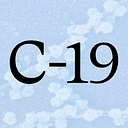The Three Most Likely Scenarios to Defeat the Coronavirus
Unlike new treatments and a vaccine, wearing a mask doesn’t require scientific breakthroughs to stop the spread of Covid-19
The calls started early today. People wanted to talk to me about the science and the trap of vaccine-savior thinking. I listened and answered questions and took notes. We also discussed distribution/equity issues if there is a vaccine.
What do we do if no vaccine rescues us? This was the conversation I found myself having with some epidemiologists, scientists, doctors, and engineers. It felt too early in the morning for that conversation. These people were too calm about it. I couldn’t tell if they were calm because they’d been thinking about this forever, and I hadn’t. Or because they were trained analytical types, or fatalists, or a little sociopathic, or because they felt it was actually quite solvable.
This is the same crew — most of whom are famous in their areas of expertise — that would say jarring things from time to time. About not being able to get back to normal for a long time. Or about viruses being able to wipe us out. But I learn so much. If you read my updates or listen to my podcast, you know I’m not a scientist. So I asked a lot of questions.
I heard about antibody dependent enhancement — how antibodies don’t equal immunity. And antibodies could often make things worse in the wrong amount.
I heard about d-dimers, protease inhibitors, steroids, and whether this is a cardiac, a pulmonary, or an immunological disease. About how it is causing strokes and clots in young healthy people. I was hearing about how patients were exhibiting things never seen before.
At no point did I hear that scientists couldn’t beat this thing. And even if they couldn’t, there were strategies that worked. Even the most pessimistic mind seemed to believe that. Ten years out we will look back and know what worked. But for now, there are scenarios.
The first scenario is the development of a safe and effective vaccine sometime in 2021. There are a lot of moving pieces to create a vaccine, and make sure it’s safe, and to produce enough and distribute it.
There are promising trials — too numerous to mention. Following those closely will be lots of ups and downs. Things that seem promising early often fade. Things don’t work on everyone. And it’s possible that a vaccine will be safe, but only partly effective or offer a partial inoculation. If that’s the case it may be used in health care workers on the frontline and in nursing homes, and high risk people.
The second scenario I spent a lot of time discussing today is Covid-19 as a chronic disease without a reliable vaccine. While initially jarring to contemplate, there is good evidence and history that this would be a manageable nor a crippling situation.
Currently, the conditions brought on by severe Covid-19 are scary & mysterious. It attacks the lungs and travels to other organ systems. We’re still learning about it. But with the help of supercomputers and data, we will learn fast. We’re not sure which therapies work in later stages (we know which don’t). But we have good anecdotal evidence that they work to reduce the viral load and lethality if given early.
We are quickly learning what is causing our immune systems to react. There’s evidence that it’s the level of d-dimer in the body. In fact it may not be the severity of the strain but the peculiarities of our own immune systems which could determine the severity of the virus.
So while antibodies may be the most effective treatment, it may in fact be things which prohibit the virus from replicating in our body that’s the key, if we can do it early. Biologics, protease inhibitors, or even steroids could be effective.
Today — in the middle of the emergency with no visibility or testing — it’s easy to forget what would happen if we could instantly determine who had SARS-CoV-2 and could treat people early. Yes, in that situation the virus would still spread fast. But effective treatments would shorten the illness period and the lethality — possibly even reduce the shedding period. In this world, people would still die from this virus, but much less frequently.
That’s not a silver bullet situation, but it’s a manageable one. In fact scenarios 1 and 2 are both possible in tandem. A partially effective vaccine, early testing and effective therapies.
As Bill Joy, the brilliant thinker and engineer reminded me, great medicines have saved lives, but it’s the simpler things, like clean water, that have saved the most lives.
If there is a silver bullet, it may not be a vaccine or therapy that outsmarts the virus. There’s a third scenario where the virus is destroyed completely by something far simpler — a reusable, cleanable highly functional and nearly free mask. Viruses can’t survive with nowhere to go. Cutting the virus off at the pass may be simplest done by never letting the droplets get into the air. The more some think about the third scenario, the more the first two become less scary and less important.
We have learned the daunting power of exponential math when it comes to infection rate or R0 (R-naught). At an R0 of 2.3, 1 person spreads Covid-19 to an average of 4,100 people in 10 generations (or circulation cycles). At 1.3, it’s only 14. At 3.3 it’s 153,000 people.
But what if you reverse that.
If high quality masks were ubiquitous, and 1,000 people have Covid-19 and the R0 is .9, after 10 cycles, it reduces itself to 350. But at .8, it’s only 107. At .3, after only 6 cycles, the virus is virtually stopped.
The math is just an illustration. But it’s been effective in Hong Kong. And with the shortage of N-95 masks and the homemade mask fad, that doesn’t seem in our possibility set right now. But it is. It is if we can make enough and distribute to everyone.
In this third scenario, lots of things — compliance, culture change, fit, ubiquity, fashion, ease of use, breathability, and equitable distribution — are all factors. Even if you don’t welcome the idea of wearing a mask for a period of time (and I would argue, why not?), the larger point is we are not powerless in the face of this virus. We have science, ingenuity, and collective action.
Social distancing works but it’s a temporary answer. Lack of testing will haunt us but it will be solved. Ventilators and hospitals will be prepared over time. We will see patterns on how to treat, or vaccinate, or both. In the meantime, there are ways to beat the virus and return to versions of a normal life. Masks hold the promise of protection at a minimum, and eradication at best.
Just as there is a lot about the virus we don’t understand, there’s a lot about how it spreads we don’t understand. It can peter out and come back. It can weaken over time. If this weren’t happening to us, but to insects under a microscope over time, we would make lots of dispassionate observations. That’s what these people I was talking to are good at — dispassionate analysis.
I know this has been long and I hope I explained my notes at least somewhat clearly. Uncertainty doesn’t feel great, but this is where we are. All disrupted. But there are many paths out.
Pulled from my daily COVID-19 updates on Twitter

